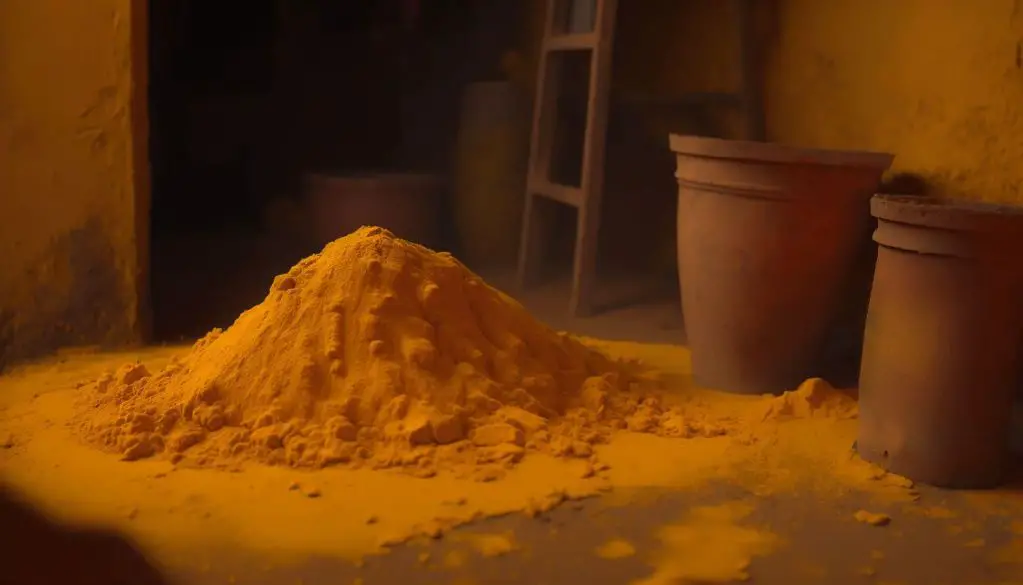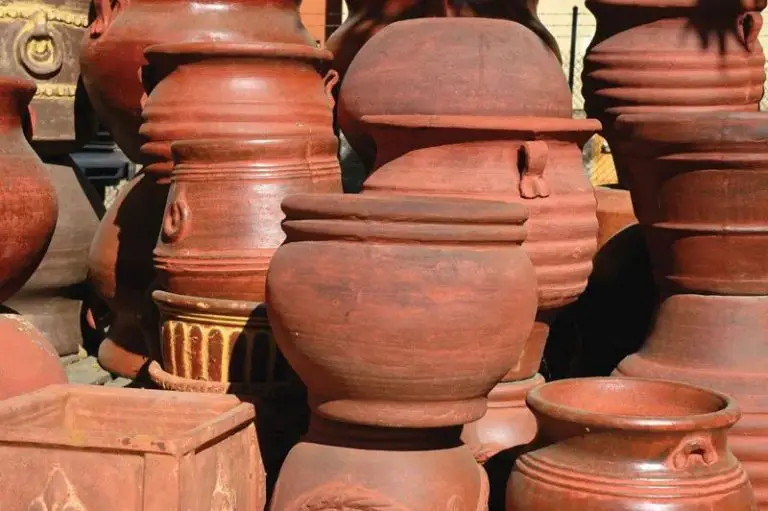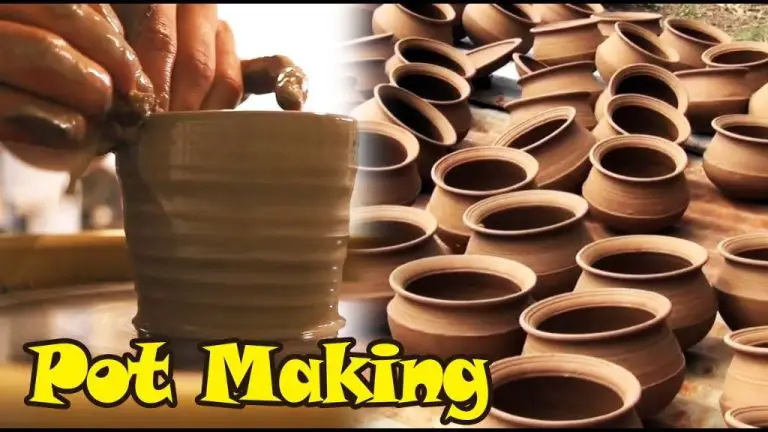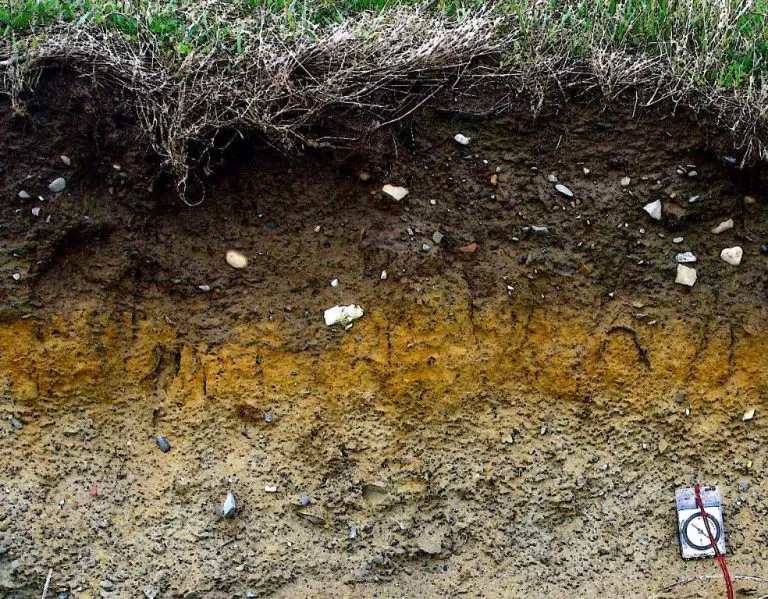What Color Makes Yellow Ochre?
What is Yellow Ochre?
Yellow ochre is a natural clay earth pigment that has been used since prehistoric times for painting. The pigment gets its yellow color from hydrated iron oxide. It varies in hue from golden yellow to deep orange or brown. Yellow ochre has been a popular pigment throughout history in many cultures and traditions.
The earliest evidence of yellow ochre as a pigment is from caves in France dating back 30,000-40,000 years. It was one of the first colors used in cave paintings during the Upper Paleolithic period. Ochre pigments have also been found in ancient Egyptian tombs from the 5th dynasty, around 2500 BC. The Egyptians used yellow ochre extensively for tomb painting and decoration.
Geographically, large ochre deposits are found in France, as well as Cyprus, Romania, Sicily, Spain and other locations. Common sources for natural yellow ochre pigments include iron-rich clays near rivers, clay pits, and open-pit mines. The pigment quality depends greatly on the mineral content of the clay.
In painting, yellow ochre has been hugely popular among artists for centuries. The pigment creates a wide range of warm yellows, golds, and browns. It is a stable natural pigment that mixes well with other colors. Yellow ochre is commonly used for underpainting and for glazes over lighter colors. It adds warmth and depth to a painting. The pigment is also used extensively for grounds and canvas preparation (ArtPracticed, 2023).
Chemical Composition
Yellow ochre is composed primarily of iron oxide, clay, and silica. According to the Natural Pigments website, the amount of each component affects the pigment’s color and properties. The iron oxide provides the yellow hue, while the clay and silica act as stabilizing agents.
There can be variations in the chemical makeup of yellow ochre depending on the mineral source. The Colourlex site notes that the main color-giving component is usually limonite, which is a mixture of hydrated iron oxides rather than a single mineral. The iron oxide composition impacts the shade and intensity of the yellow.
In general, a higher iron oxide content produces a deeper, warmer yellow, while more clay and silica create a paler, duller yellow. The balance of ingredients directly influences the resulting color tone of the ochre pigment. Even ochres from the same source can vary slightly in hue depending on the ratios of chemicals present.
How Yellow Ochre is Made
Yellow ochre is traditionally obtained through mining deposits of the mineral. It is extracted by quarrying yellow ochre deposits and then crushing the mineral into a coarse powder. The powder is then washed and soaked in water to separate sand and other impurities before being filtered and dried. This produces the pigment in a raw form.

To improve the intensity and purity of the color, the raw ochre goes through further processing. This involves calcination, a heating process that converts the hydrated iron oxide to anhydrous iron oxide, creating a stronger and more permanent yellow hue. The pigment may also be washed in acid solutions to leach out any remaining impurities. After processing, the ochre is graded into different quality levels depending on color depth and purity. The highest grades have an intense yellow tone without impurities.
While natural ochre is still used, most modern production relies on synthetic versions. These are manufactured by chemically precipitating iron salts to produce iron oxides of varying shades. This allows precise control over the hue and opacity. However, many artists prefer the natural earth tones and granular texture of traditional ochre pigments. Both varieties have their merits as colorants.
Color Properties
Yellow ochre has a rich golden yellow hue with warm undertones. It is opaque and semi-transparent depending on the thickness of application (1). The natural pigment has excellent permanence and lightfastness, though the synthetic versions can fade over time (2).
The natural mineral pigment ranges from a lemon yellow to a deep orange hue depending on the iron oxide content. The higher the iron oxide, the richer and darker the color. Natural yellow ochre from different locations can vary in transparency and color intensity. For example, Italian ochres produce very transparent glazes while French ochres are more opaque (2).
Synthetic yellow ochre is more consistent in its appearance and often has a brighter, cleaner yellow than natural ochre. However, it lacks the earthy depth and transparency of the natural version. Most artists prefer natural yellow ochre for its organic nuances, though synthetic can be useful when a consistent color is needed (1).
Overall, yellow ochre offers a versatile sunny yellow pigment with excellent permanence. Its appearance can range from bright lemon to deep orange-gold depending on the source and composition. Both natural and synthetic versions have their merits for artists.
Sources:
(1) https://www.naturalpigments.com/artist-materials/yellow-ochre-a-comprehensive-guide
(2) https://colourlex.com/project/yellow-ochre/
Use in Painting
Yellow ochre has been used as a pigment in painting for thousands of years. Its warm, earthy hue and excellent covering power make it a versatile color for artists. Here are some of the key qualities and uses of yellow ochre paint:
As a pigment, yellow ochre has moderate tinting strength and is opaque rather than transparent. It has good covering power. This allows it to cover up underlying colors well when applied in oil or acrylic painting. However, it also means colors underneath can alter the resulting hue. For best results, apply yellow ochre paint over a white or very pale ground.
Yellow ochre mixes well with a range of colors. When mixed with white, it produces soft, creamy yellow tones. With cadmium yellow, it creates bright lemon yellows. Added to earth greens and browns, yellow ochre warms up the tones. Mixed with alizarin crimson, it makes rich burnt orange hues. Historically, painters have commonly mixed yellow ochre with lead white, vermilion, and earth pigments.
The use of yellow ochre pigment dates back to ancient cave paintings. Old master painters like Rembrandt commonly used yellow ochre for underpainting and glazing techniques. Today, yellow ochre remains popular with artists painting in both traditional and modern styles (source).
Notable Yellow Ochre Art
Yellow ochre has been used as an artistic pigment for millennia. Some of the most famous works of art feature yellow ochre prominently.
In cave paintings found in southern France and northern Spain, yellow ochre was used to create majestic images of animals. The pigment provided a vivid yellow tone that brought the prehistoric creatures to life. The cave paintings of Lascaux and Altamira demonstrate the early artistic use of yellow ochre over 17,000 years ago.
During the Renaissance, yellow ochre saw extensive use. Masters like Rembrandt often reached for the dependable ochre hues. Rembrandt’s recognized self-portraits showcase yellow ochre blended with white to capture the subtle highlights on his face. Vermeer similarly utilized the earthy yellow in iconic works like Girl with a Pearl Earring.
Post-Impressionists like Van Gogh were also fond of yellow ochre. In painting like Wheatfield with Cypresses, Van Gogh’s short brush strokes incorporate yellow ochre to convey the vibrancy of the Provence landscape. He wrote fondly of the hue in letters to his brother Theo. Later modernists like Picasso continued to rely on the strong yellow ochre pigment in radical works like Les Demoiselles d’Avignon.
Beyond Western art, yellow ochre permeates works around the globe. Traditional African mudcloth often features the pigment, obtained locally by artisans in Mali. In remote aboriginal arts, yellow ochre provides a symbolic color of life and water. From rock walls to canvas, yellow ochre persists as a versatile and esteemed pigment.
Geology of Yellow Ochre
Yellow ochre deposits are formed through the weathering of iron-rich rocks and minerals over long periods of time. The main geologic processes involved are oxidation and hydration. As rocks containing iron minerals are exposed to water, air and microbial activity, the iron oxidizes into limonite and goethite which give yellow ochre its distinctive golden yellow color.
Major deposits of yellow ochre are found in regions with substantial iron mineral deposits and the right climate conditions to facilitate weathering. Notable source regions include France, Cyprus, Romania, Russia, India, Africa and the United States. The iron content in these deposits can vary substantially depending on the original host rocks. For example, deposits formed from igneous rocks like granite tend to be purer and have higher concentrations of iron oxides.
There can also be significant variation in the mineral makeup of different yellow ochre deposits. While the main iron minerals are limonite and goethite, other mineral impurities can be present such as quartz, kaolinite, manganese oxides and calcite. The relative proportions of these minerals affect the hue and intensity of the yellow ochre pigment produced.
Other Yellow Pigments
Yellow ochre is one of the most common natural yellow pigments used in painting. However, there are many other synthetic and natural yellow pigment options that painters can use as well. Some comparisons with other common yellow pigments include:
Cadmium Yellow – Cadmium yellows tend to be more vivid and intense than yellow ochre. They have excellent hiding power and tinting strength. However, cadmium pigments can be more toxic and expensive than ochres. Cadmium yellow has been largely replaced by azo pigments in many paint ranges today (Pigment Colour Index: Yellow Pigments).
Hansa Yellow – The synthetic organic hansa yellows provide clean, intense yellows similar to cadmium but at a lower cost and toxicity. Hansa yellows have better lightfastness than earlier synthetic yellows. They mix well but can overpower other pigments.
Raw Sienna – Raw sienna is an earth pigment that is more transparent, lower in chroma, and slightly more orange in hue than yellow ochre. Some artists prefer siennas for mixing neutrals as they create greyer tones (Yellow Ochre vs Raw Sienna).
In general, yellow ochre offers a good balance between transparency and opacity for an earth pigment. It is not as intense as synthetic yellows but provides a safer, more muted yellow tone. Yellow ochre is best used when a soft, natural yellow is desired rather than a bright, intense one.
Preparing and Handling Yellow Ochre Pigment
Yellow ochre pigment is available in powder or paste form. The powder form is made from grinding ochre rocks into a fine dust. This powder pigment must be prepared properly before use in painting:
To use yellow ochre powder, mix the dry pigment with a medium like oil, egg tempera, or acrylic gel to form a paste. Use a glass muller on a glass or marble slab for best results. Add a small amount of medium at a time to reach the desired consistency. Over-mulling the pigment can damage the color properties. Store prepared yellow ochre pastes in a sealed container.
The paste form of yellow ochre is ready to use straight from the tube or jar. Simply squeeze out or scoop up the amount needed. Leftover paste paint can be stored for later use if properly sealed.
Yellow ochre pigment is considered non-toxic, but care should be taken when handling the dry powder to avoid inhaling the dust [1] [2]. Wear a dust mask when mixing the dry pigment. Ochre pastes and prepared paints can be safely handled without protective equipment.
Store both powder and paste ochre pigment in cool, dry conditions away from sunlight. Kept properly sealed, the ochre pigment should remain usable for many years.
The Enduring Legacy
Yellow ochre has been prized as an artist’s pigment for centuries. The earliest known use dates back to prehistoric cave paintings, where it was used to create the yellows and browns in artwork on cave walls. Its warm, earthy coloring has made it an ideal pigment for depicting natural elements like sand, rock, vegetation and skin tones. Yellow ochre maintains its popularity today among artists who appreciate its organic, natural look and mixability.
References:
https://www.naturalpigments.com/artist-materials/yellow-ochre-a-comprehensive-guide
https://www.royaltalens.com/en/inspiration/tips-techniques/colour-stories/ochre-an-ancient-pigment/
Despite fluctuations in its use over time, yellow ochre has never fallen out of favor with artists. It remains readily available from major paint suppliers, ensuring its endurance as a beloved pigment. With its natural earth tones and subtle luminosity, yellow ochre will likely continue inspiring artists for centuries to come.




